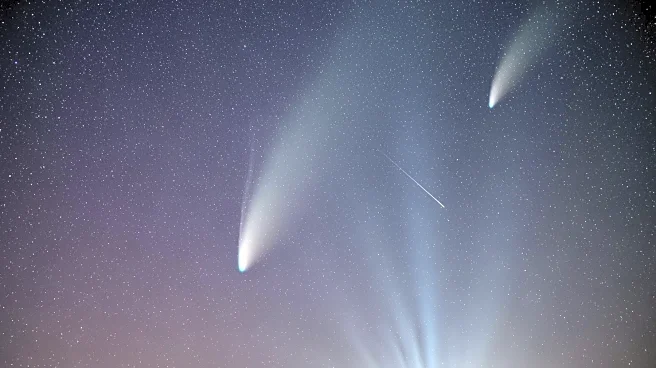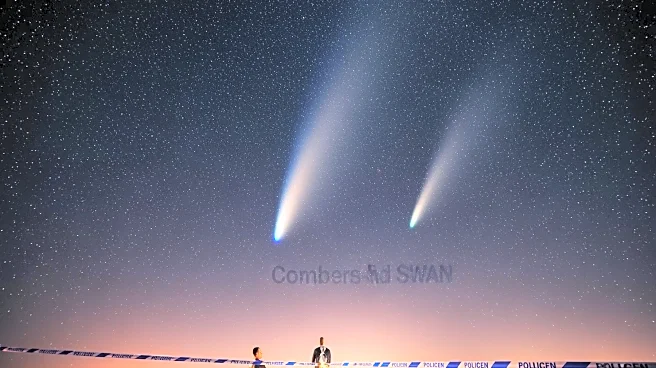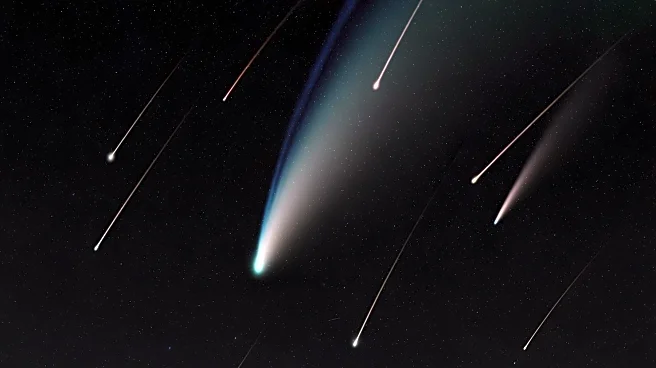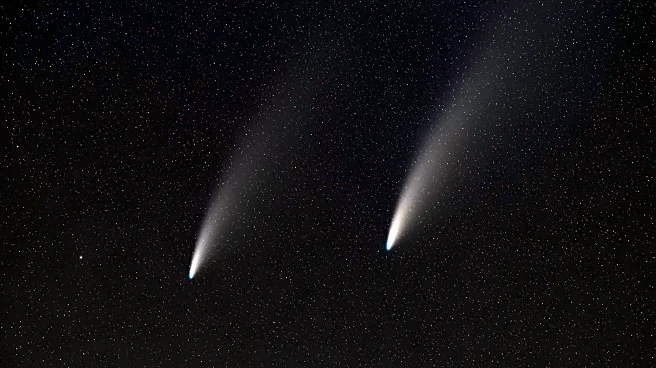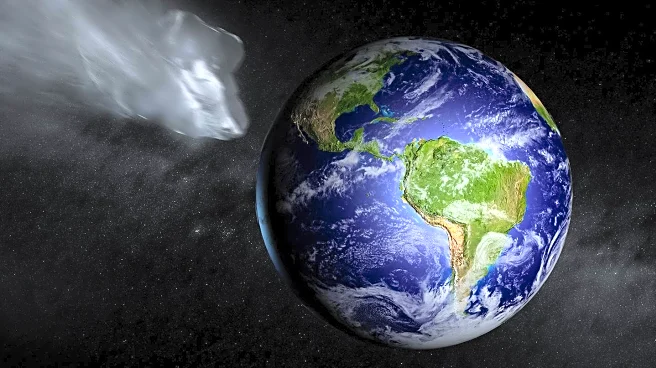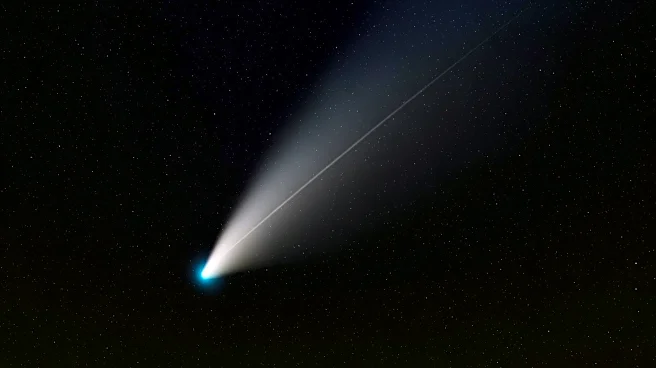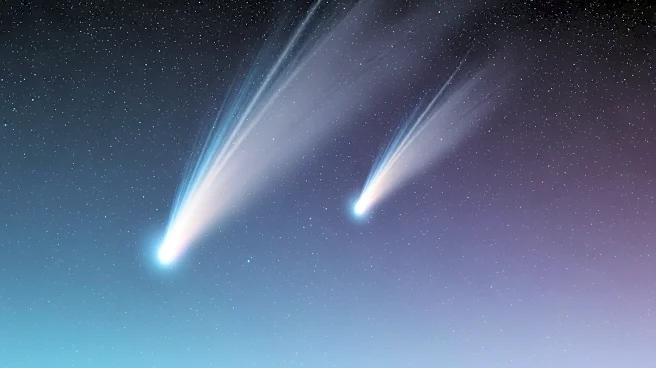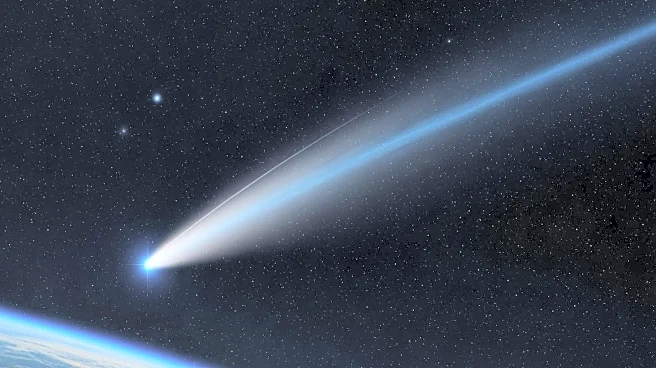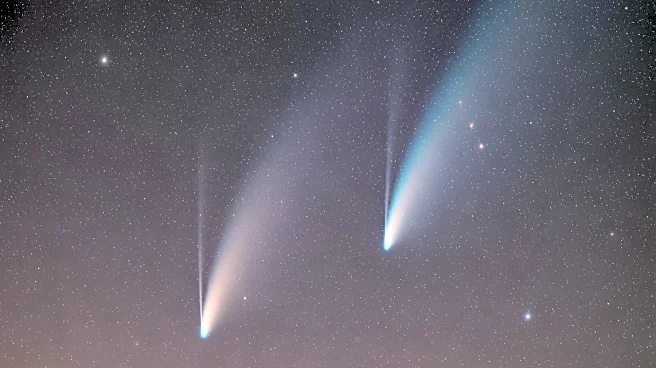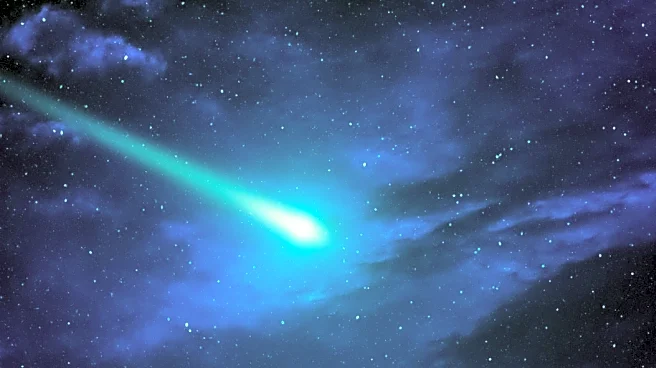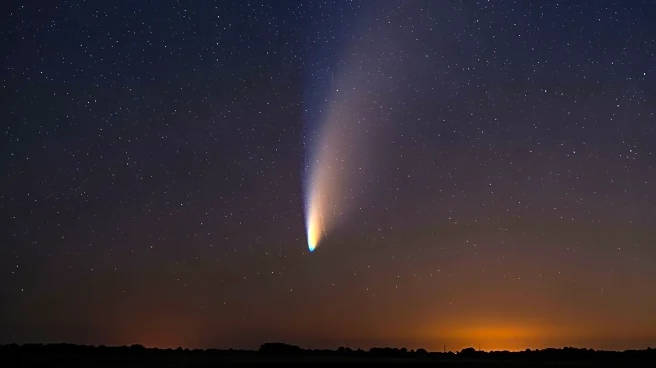What's Happening?
Comet Lemmon (C/2025 A6) and Comet SWAN (C/2025 R2) are currently visible in the skies above Earth, providing a rare opportunity for observation. Comet SWAN is expected to shine the brightest on Monday,
October 20, while Comet Lemmon will peak on Tuesday, October 21. Discovered in 2025, Comet Lemmon was identified by the Mount Lemmon Survey in Arizona, and Comet SWAN was discovered by Ukrainian amateur astronomer Vladimir Bezugly using the Solar Wind ANisotropies instrument. Comet Lemmon can be seen without equipment, but Comet SWAN may require optical aids due to its faintness.
Why It's Important?
The visibility of Comet Lemmon and Comet SWAN offers a unique chance for both amateur and professional astronomers to study these celestial objects. This event is significant as it provides insights into the behavior and characteristics of non-periodic comets, which have highly elliptical orbits and do not return for hundreds of years. The event encourages public interest in astronomy and science, potentially leading to increased educational activities and community engagement. It also highlights the contributions of amateur astronomers in discovering and tracking celestial phenomena.
What's Next?
Observers are encouraged to take advantage of this rare opportunity to view the comets, as they will not return for hundreds of years. Astronomy clubs and educational institutions may organize viewing events, and the public is advised to seek locations with minimal light pollution for optimal viewing. The event may inspire further research into cometary science and the dynamics of celestial bodies. As the comets continue their journey, astronomers will provide updates on their visibility and trajectory.
Beyond the Headlines
The appearance of Comet Lemmon and Comet SWAN highlights the unpredictability of space phenomena and the importance of continuous observation and research. It underscores the role of technology and international collaboration in advancing our understanding of the universe. The event also serves as a reminder of the vastness and complexity of the solar system, encouraging curiosity and exploration.
